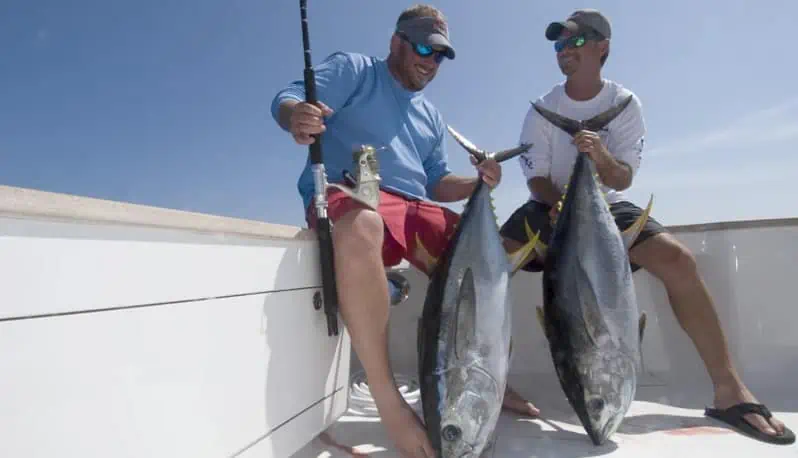Selecting the right fishing line, whether it’s braided or monofilament, requires careful consideration. With varied opinions from angling experts, the decision between braid and mono isn’t always straightforward. Each line has its strengths and weaknesses, and knowing when to opt for one over the other can significantly impact your fishing success. Here’s a concise breakdown to guide your choice:
Braided Fishing Line:
- Advantages:
- Minimal stretch enhances casting distance.
- Smaller diameter allows easier air and water penetration for extended casts.
- Greater sensitivity enables better contact with hooked fish.
- Stronger pound-test ratio allows more line on smaller reels.
- Effective for working plugs, lures, and bottom fishing.
- Ideal for fishing around structures like mangroves.
- Considerations:
- Knot-failure rate necessitates well-tested connections.
- Might inhibit bites in clear water, even with a fluorocarbon leader.
- Slicing through kelp and vegetation might lead to fewer tangles.
Monofilament Fishing Line:
- Advantages:
- Stretch provides shock absorption, preventing snap-offs during sudden hits.
- Better knot retention and cost-effectiveness.
- Safety for big-game trolling to prevent finger injuries.
- Effective for kite-fishing and running through clips.
- Considerations:
- Less sensitive compared to braid.
- Lower abrasion resistance compared to fluorocarbon.
- Better for clear water situations and when targeting snapper or bonefish.

Fluorocarbon Main Line:
- Advantages:
- Higher shock strength makes it useful for inshore fishing.
- Offers good abrasion resistance and knot strength.
- Lower visibility in water compared to other lines.
- Effective for kingfish tournament fishing when paired with wire leaders.
- Considerations:
- Can be more expensive than traditional mono.
- Vulnerable to friction, requiring careful handling.
- Some knots might not work well with fluorocarbon.
The Right Choice for Optimal Results:
- Trolling, live-bait fishing, and kite-fishing: Opt for mono.
- Bottomfishing, fishing structure, casting plugs/lures, and fishing kelp: Choose braid.
- Lighter braid for open flats and heavier braid for fishing around structures.
When deciding between braid and mono fishing lines, remember that both options have evolved over time to balance their strengths and weaknesses. Make informed decisions based on your fishing environment, target species, and desired outcomes. By adhering to these guidelines, you’ll enhance your fishing experiences and increase your chances of successful hookups while minimizing cutoffs.
Images/Source: SportFishing





